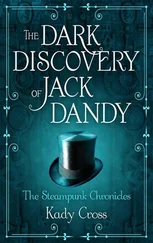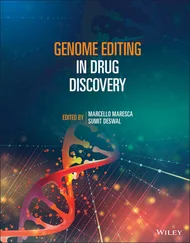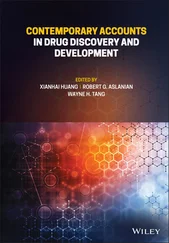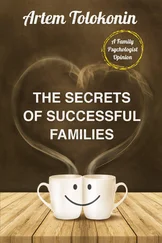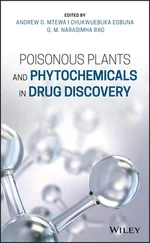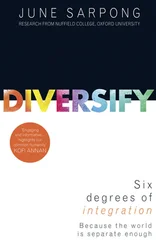21 21 Kuriyama, K., Roberts, E., and Rubinstein, M.K. (1966). Elevation of gamma‐aminobutyric acid in brain with amino‐oxyacetic acid and susceptibility to convulsive seizures in mice: a quantitative re‐evaluation. Biochem. Pharmacol. 15: 221–236.
22 22 Loscher, W. (1980). A comparative study of the pharmacology of inhibitors of GABA‐metabolism. Naunyn‐Schmiedeberg's Arch. Pharmacol. 315: 119–128.
23 23 Silverman, R.B. and Levy, M.A. (1980). Irreversible inactivation of pig brain gamma‐aminobutyric acid‐alpha‐ketoglutarate transaminase by 4‐amino‐5‐halopentanoic acids. Biochem. Bioph. Res. Co. 95: 250–255.
24 24 (a) Taylor, C.P., Vartanian, M.G., Andruszkiewicz, R., and Silverman, R.B. (1992). 3‐Alkyl GABA and 3‐alkylglutamic acid analogs – 2 new classes of anticonvulsant agents. Epilepsy Res. 11: 103–110.(b) Silverman, R.B., Andruszkiewicz, R., Nanavati, S.M. et al. (1991). 3‐Alkyl‐4‐aminobutyric acids – the 1st class of anticonvulsant agents that activates l‐glutamic acid decarboxylase. J. Med. Chem. 34: 2295–2298.
25 25 Verrey, F. (2003). System L: heteromeric exchangers of large, neutral amino acids involved in directional transport. Pflug. Arch. Eur. J. Phy. 445: 529–533.
26 26 Patridge, E., Gareiss, P., Kinch, M.S., and Hoyer, D. (2016). An analysis of FDA‐approved drugs: natural products and their derivatives. Drug Discovery Today 21: 204–207.
27 27 Fleming, A. (1929). On the antibacterial action of cultures of a penicillium, with special reference to their use in the isolation of B. influenzæ. Br. J. Exp. Pathol. 10: 226–236.
28 28 Gaynes, R. (2017). The discovery of penicillin – new insights after more than 75 years of clinical use. Emerg. Infect. Dis. 23: 849–853.
29 29 Tan, S. and Tatsumura, Y. (2015). Alexander Fleming (1881–1955): discoverer of penicillin. Singapore Med. J. 56: 366–367.
30 30 Schatz, A., Bugie, E., and Waksman, S.A. (1944). Streptomycin, a substance exhibiting antibiotic activity against gram‐positive and gram‐negative bacteria. Clin. Orthop. Relat. Res. 2005: 3–6.
31 31 (a) Pringle, P. and Moss, D.W. (2012). Experiment eleven: deceit and betrayal in the discovery of the cure for tuberculosis. London; New York: Bloomsbury.(b) Wainwright, M. (1991). Streptomycin – discovery and resultant controversy. Hist. Phil. Life Sci. 13: 97–124.
32 32 Gall, Y.M. and Konashev, M.B. (2001). The discovery of Gramicidin S: the intellectual transformation of G.F. Gause from biologist to researcher of antibiotics and on its meaning for the fate of Russian genetics. Hist. Phil. Life Sci. 23: 137–150.
33 33 Zubrod, C.G., Schepartz, S.A., and Carter, S.K. (1977). Historical background of the National Cancer Institute's drug development thrust. Natl. Cancer Inst. Monogr.: 7–11.
34 34 Wall, M.E., Wani, M.C., Cook, C.E. et al. (1966). Plant antitumor agents. I. Isolation and structure of camptothecin a novel alkaloidal leukemia and tumor inhibitor from Camptotheca acuminata. J. Am. Chem. Soc. 88: 3888–3890.
35 35 Stork, G. and Schultz, A.G. (1971). The total synthesis of dl‐camptothecin. J. Am. Chem. Soc. 93: 4074–4075.
36 36 (a) Danishefsky, S., Etheredge, S.J., Volkmann, R. et al. (1971). Nucleophilic additions to allenes – New synthesis of alpha‐pyridones. J. Am. Chem. Soc. 93: 5575.(b) Volkmann, R., Danishefsky, S., Eggler, J., and Solomon, D.M. (1971). Total synthesis of dl‐camptothecin. J. Am. Chem. Soc. 93: 5576.
37 37 Boch, M., Winterfeldt, E., Nelke, J.M. et al. (1972). Reactions with indole‐derivatives. 17. Biogenetically orientated total‐synthesis of dl‐camptothecin and 7‐chlorocamptothecin. Chem. Ber‐Recl. 105: 2126.
38 38 (a) Hertzberg, R.P., Caranfa, M.J., and Hecht, S.M. (1989). On the mechanism of topoisomerase‐I inhibition by camptothecin – evidence for binding to an enzyme DNA complex. Biochemistry 28: 4629–4638.(b) Staker, B.L., Feese, M.D., Cushman, M. et al. (2005). Structures of three classes of anticancer agents bound to the human topoisomerase I − DNA covalent complex. J. Med. Chem. 48: 2336–2345.
39 39 Wani, M.C., Taylor, H.L., Wall, M.E. et al. (1971). Plant antitumor agents. 6. Isolation and structure of taxol, a novel antileukemic and antitumor agent from Taxus‐Brevifolia. J. Am. Chem. Soc. 93: 2325.
40 40 Wilson, C.R., Sauer, J.‐M., and Hooser, S.B. (2001). Taxines: a review of the mechanism and toxicity of yew (Taxus spp.) alkaloids. Toxicon 39: 175–185.
41 41 Horwitz, S.B. (2019). Reflections on my life with taxol. Cell 177: 502–505.
42 42 (a) Schiff, P.B., Fant, J., and Horwitz, S.B. (1979). Promotion of microtubule assembly invitro by taxol. Nature 277: 665–667.(b) Schiff, P.B. and Horwitz, S.B. (1980). Taxol stabilizes microtubules in mouse fibroblast cells. Proc. Natl. Acad. Sci. U. S. A. 77: 1561–1565.
43 43 (a) Holton, R.A., Somoza, C., Kim, H.B. et al. (1994). First total synthesis of taxol. 1. Functionalization of the B‐ring. J. Am. Chem. Soc. 116: 1597–1598.(b) Holton, R.A., Kim, H.B., Somoza, C. et al. (1994). First total synthesis of taxol. 2. Completion of the C‐ring and D‐ring. J. Am. Chem. Soc. 116: 1599–1600.
44 44 Nicolaou, K.C., Yang, Z., Liu, J.J. et al. (1994). Total synthesis of taxol. Nature 367: 630–634.
45 45 Masters, J.J., Link, J.T., Snyder, L.B. et al. (1995). A total synthesis of taxol. Angew. Chem. Int. Ed. 34: 1723–1726.
46 46 Wender, P.A. and Mucciaro, T.P. (1992). A new and practical approach to the synthesis of taxol and taxol analogs – the pinene path. J. Am. Chem. Soc. 114: 5878–5879.
47 47 (a) Morihira, K., Hara, R., Kawahara, S. et al. (1998). Enantioselective total synthesis of taxol. J. Am. Chem. Soc. 120: 12980–12981.(b) Kusama, H., Hara, R., Kawahara, S. et al. (2000). Enantioselective total synthesis of (‐)‐taxol. J. Am. Chem. Soc. 122: 3811–3820.
48 48 Mukaiyama, T., Shiina, I., Iwadare, H. et al. (1999). Asymmetric total synthesis of Taxol (R). Chem‐Eur. J. 5: 121–161.
49 49 Takahashi, T., Okabe, T., Iwamoto, H. et al. (1997). A biomimetic approach to taxol: stereoselective synthesis of a 12‐membered ring ene‐epoxide. Isr. J. Chem. 37: 31–37.
50 50 McGuire, W.P., Rowinsky, E.K., Rosenshein, N.B. et al. (1989). Taxol: a unique antineoplastic agent with significant activity in advanced ovarian epithelial neoplasms. Ann. Intern. Med. 111: 273–279.
51 51 Gore, A. (2006). An Inconvenient Truth: the Planetary Emergency of Global Warming and What We Can Do About It. London: Bloomsbury.
52 52 Walsh, V. and Goodman, J. (1999). Cancer chemotherapy, biodiversity, public and private property: the case of the anti‐cancer drug Taxol. Soc. Sci. Med. 49: 1215–1225.
53 53 Denis, J.N., Greene, A.E., Guenard, D. et al. (1988). A highly efficient, practical approach to natural taxol. J. Am. Chem. Soc. 110: 5917–5919.
54 54 Singla, A.K., Garg, A., and Aggarwal, D. (2002). Paclitaxel and its formulations. Int. J. Pharm. 235: 179–192.
55 55 Hirsh, V. (2014). nab‐paclitaxel for the management of patients with advanced non‐small‐cell lung cancer. Expert Rev. Anticancer Ther. 14: 129–141.
56 56 Hofle, G.H., Bedorf, N., Steinmetz, H. et al. (1996). Epothilone A and B – novel 16‐membered macrolides with cytotoxic activity: isolation, crystal structure, and conformation in solution. Angew. Chem. Int. Ed. 35: 1567–1569.
57 57 (a) Su, D.‐S., Meng, D., Bertinato, P. et al. (1997). Total synthesis of(–)‐epothilone B: an extension of the Suzuki coupling method and insights into structure–activity relationships of the epothilones. Angew. Chem. Int. Ed. 36: 757–759.(b) Balog, A., Meng, D.F., Kamenecka, T. et al. (1996). Total synthesis of (−)‐epothilone A. Angew. Chem. Int. Ed. 35: 2801–2803.
58 58 (a) Yang, Z., He, Y., Vourloumis, D. et al. (1997). Total synthesis of epothilone A: the olefin metathesis approach. Angew. Chem. Int. Ed. 36: 166–168.(b) Nicolaou, K.C., Ninkovic, S., Sarabia, F. et al. (1997). Total syntheses of epothilones A and B via a macrolactonization‐based strategy. J. Am. Chem. Soc. 119: 7974–7991.
Читать дальше


